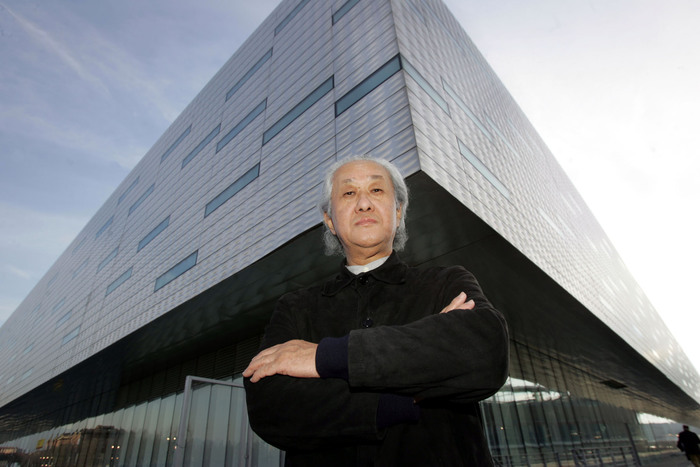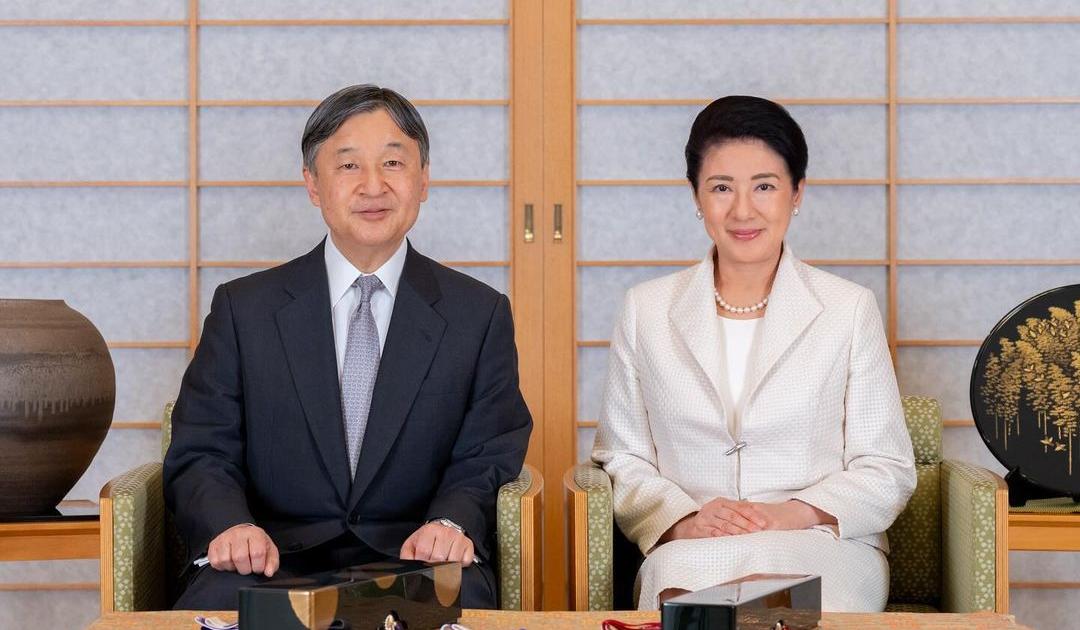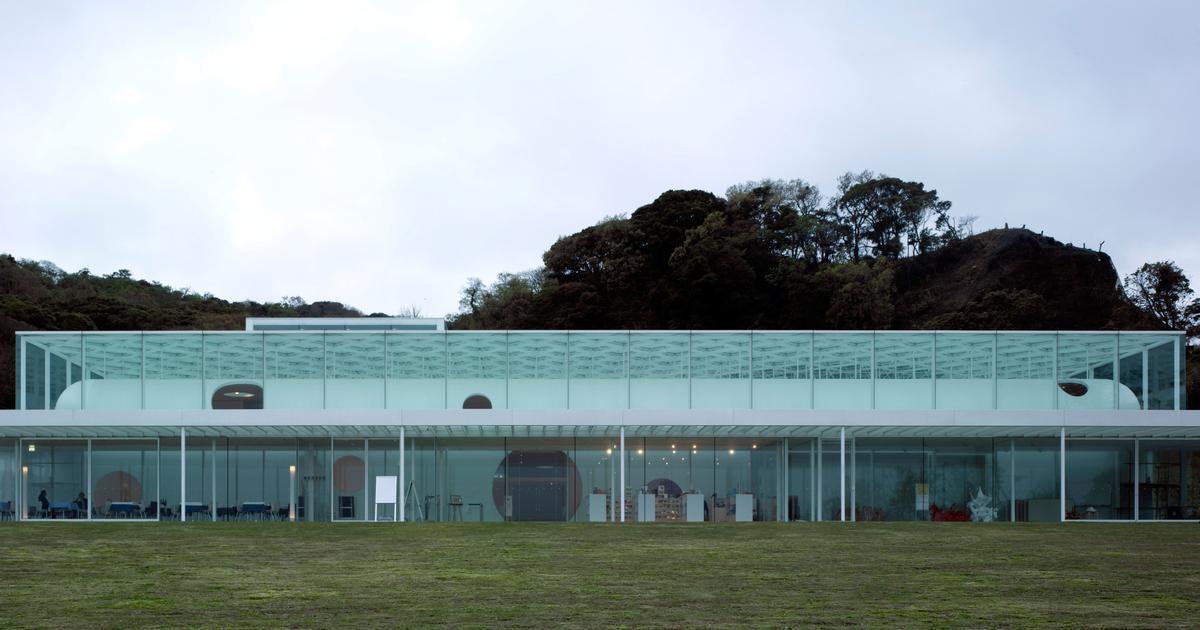His first experience of architecture was "the void of architecture", the shattering effect of the atomic bomb on Hiroshima.
"It was then that I began to think about how to rebuild houses and cities," said Arata Isozaki, the Japanese archistar, born in Oita, on the island of Kyushu, in 1931, just fourteen when his land was devastated by the second world War.
Pritzker Prize in 2019, Golden Lion at the Venice International Architecture Exhibition in 1996, Isozaki died today in Tokyo, at the age of 91.
A spokesman for his studio in Barcelona confirmed this to the Spanish agency Efe.
Over one hundred of his works spread all over the world, even if in Italy his name is linked above all to the project of the Loggia degli Uffizi, the new monumental exit of the Florentine museum, never built.
Designer, urban planner and theorist, capable of fusing Eastern and Western aesthetics, modernism and postmodernism, global and local, in his prolific career Isozaki has applied construction techniques that are different from time to time, able to interpret the territory and the context in which they were designed and built its buildings.
Among his most famous works - ranging from Tokyo to Milan, from Doha to Shanghai - the Museum of Contemporary Art in Los Angeles, the Palau Sant Jordi in Barcelona for the 1992 Games, the National Museum of Egyptian Civilization in Cairo, the Qatar National Convention Center.
In Italy,
With Maffei in 1999 he won the international tender for the new monumental exit of the Uffizi, at the center of a ten-year dispute, in particular with Vittorio Sgarbi, who had just returned to his role of Undersecretary for Culture.
"Florence, homeland of the greatest architects in the history of humanity, cannot fail to mourn this great personality who has disseminated Japan and the whole world with extraordinary works", pays homage to the mayor Dario Nardella.
And the director of the Uffizi, Eike Schmidt, points out that "his abstract and limpid language was partly inspired by his profound knowledge of Italian Renaissance architecture".
On March 5, 2019, Isozaki was awarded the Pritzker Prize, considered the Nobel Prize for Architecture, as "one of the most influential figures in contemporary architecture, in constant research, never afraid to try new ideas. His work - underlined the jury - it is based on a deep understanding not only of architecture, but also of philosophy, history, theory, culture. It has brought East and West together, not as imitation or collage, but through new paths".
A choice also linked to his generosity, for "the support given to other architects by encouraging them in competitions and other forms of collaboration".
Born on July 23, 1931 in Oita, Kyushu (Japan), Isozaki graduated in Architecture from the University of Tokyo in 1954. He was a student of Kenzo Tange and collaborated with his team until 1964, when he opened the his studio in the Japanese capital.
In the ten years of collaboration with Tange he participated in the design of buildings such as the Kaguna Prefecture in Takamatsu (1955-58);
the Imabani City Hall (1957-58) and the Tokyo City Plan (1959-1960).
Among his early works in Japan, the Medical College Building (1959, in Oita) and the Municipal Library (1962, in Kitakyushu).
In the 1980s, between 1981 and 1986, he created the Museum of Contemporary Art in Los Angeles, California.
In 1983 he won the international competition for the construction of the Palau de Sant Jordi in Barcelona and in 1985 he started the construction of the Olympic pavilion, which was inaugurated in September 1990. In June 1991 he was awarded the 1990 FAD Grand Prix for Architecture for this Work.
Grand Cross of Civil Merit in Spain, he also received the RIBA (Royal Institute of British Architects) gold medal in 1985. In the 1990s he developed numerous projects in China (Shenzhen Cultural Center, 1998; Zendai Himalayas Center, Shanghai, 2003) and in Europe, such as the Manggha Center of Japanese Art and Technology in Krakow (1990-94).
Isozaki married the sculptor Aiko Miyawaki, author of the sculptures located at the entrance to the Palau Sant Jordi in Barcelona, which symbolize a garden with trees.
opened in September 1990. In June 1991 he was awarded the 1990 FAD Grand Prix for Architecture for this work.
Grand Cross of Civil Merit in Spain, he also received the RIBA (Royal Institute of British Architects) gold medal in 1985. In the 1990s he developed numerous projects in China (Shenzhen Cultural Center, 1998; Zendai Himalayas Center, Shanghai, 2003) and in Europe, such as the Manggha Center of Japanese Art and Technology in Krakow (1990-94).
Isozaki married the sculptor Aiko Miyawaki, author of the sculptures located at the entrance to the Palau Sant Jordi in Barcelona, which symbolize a garden with trees.
opened in September 1990. In June 1991 he was awarded the 1990 FAD Grand Prix for Architecture for this work.
Grand Cross of Civil Merit in Spain, he also received the RIBA (Royal Institute of British Architects) gold medal in 1985. In the 1990s he developed numerous projects in China (Shenzhen Cultural Center, 1998; Zendai Himalayas Center, Shanghai, 2003) and in Europe, such as the Manggha Center of Japanese Art and Technology in Krakow (1990-94).
Isozaki married the sculptor Aiko Miyawaki, author of the sculptures located at the entrance to the Palau Sant Jordi in Barcelona, which symbolize a garden with trees.
he also received the gold medal of the RIBA (the Royal Institute of British Architects) in 1985. In the 1990s he developed numerous projects in China (Shenzhen Cultural Center, 1998; Zendai Himalayas Center, Shanghai, 2003) and in Europe, such as the Manggha Center of Japanese Art and Technology in Krakow (1990-94).
Isozaki married the sculptor Aiko Miyawaki, author of the sculptures located at the entrance to the Palau Sant Jordi in Barcelona, which symbolize a garden with trees.
he also received the gold medal of the RIBA (the Royal Institute of British Architects) in 1985. In the 1990s he developed numerous projects in China (Shenzhen Cultural Center, 1998; Zendai Himalayas Center, Shanghai, 2003) and in Europe, such as the Manggha Center of Japanese Art and Technology in Krakow (1990-94).
Isozaki married the sculptor Aiko Miyawaki, author of the sculptures located at the entrance to the Palau Sant Jordi in Barcelona, which symbolize a garden with trees.









